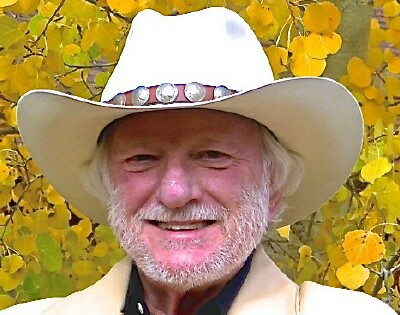The Revolutionary Evolution of the Media: A Book in Progress, Part II – Paul S. Maxwell

Comment : As threatened, I have a little something to add to Tuesday’s results. Look for a very interesting year-long slog of rewriting and “updating” the ’96 Telecom Act. AR Sen. Pryor, who – along with most Democrats – lost in a rout, has been chair of the Communications Subcommittee on the Commerce Committee. That probably means SD Sen. Thune will be the Republican chair next Congress in what will likely be Sen. Nelson’s committee. Look, though, for steady input from Sen’s Markey, McCaskill and Klobuchar. Markey, especially, will be noisily involved. Will be interesting to watch the changes coming as Republicans really take over as the next election cycle begins today. (How soon will too many negative ads begin running?) Hard to say what impact the election might have as the Democratically-led FCC and Justice Department decide the fate of Comcast and Time Warner Cable. Should be some interesting shake-ups as Democrats become the minority in the Senate and an even smaller minority in the House. Will also be fun to watch the Republicans search for internal comity and attempt to define a mandate beyond “no Obama.”
Introduction to the Book:
In the beginning was the word … and the word was … well, we just don’t know. Maybe it was a grunt, an ugh, or an ouch! Or an order to stop!Or go!
Not long after the noise, a word became a symbol with one symbolic creator scratching the drying muck … or a tree bark … or knots in a rope … or simple scratches on anything else handy with the beginning of counting and commerce.
No matter, those original words and/or symbols are lost to history … but they started what has become the cacophony of modern communications and media and they initiated what has become one of the fastest changing aspects of our modern world.
This book/blog is an attempt to explain how language, culture and writing resulted in today’s “media(s)” and more importantly, where it’s all going.
Ok, for the impatient among you, consider the following:
• As Marshall McLuhan (when he wasn’t in a Woody Allen movie) once famously wrote: “The medium is the message.”
• As Sumner Redstone loves to growl (cue the oracle music): “Content is King!”
• As the future rushes upon us, we are discovering that content is the message and is the medium and in fact is the sender and the recipient. Where we’re headed is going to look and be a whole hell of a lot different than we are or have been. And, yep, I will get to that.
Meanwhile, let’s start with this question: How might exploring from whence medias arose prepare us for the next iterations? And, think about this: How many passive-only media consumers will exist at the end of this century?
Way, way back, communication was primarily local … or one-to-one or one-to-few. A family unit, for example, or the beginnings of a tribal unit. How far back? Well, according to Scientific American (09/14 edition) about 80K to 100K years ago in the early years of the rise of us (i.e. homo sapiens). That original symbol represented some part of the grunts. Language … both spoken and written … was in development. By 3500 BC, Wikipedia puts the root language of the Western World (Proto-Indo-European or PIE) in use along with a wider variety of tongues across Asia and the not-yet-officially-discovered New World. And like most developments in history, commerce (which included nomadic hunting) drove the development of the next steps. Early mankind was already socially active, communally active and using tool and fire.
Zoom forward to today’s early 21st century medias and what do you find? An explosion of medias splintering and reforming and trying to figure out what’s next.
Yep, Google is a media company (partly). That scares the legacy companies. Why else would a Time Warner spin off its cable unit and then Comcast decide that, as a cable company, it needed a broadcast/production company? And then want to, so to speak, double down on cable by trying to merge Time Warner Cable?
Not to mention Rupert Murdoch and its Fox units wanting to buy Time Warner.
Methinks they are all confused … but maybe they’re just trying to manage Wall Street?
In the meantime, the rest of the new and old media companies are wondering what business they’re in … and wondering what business they should be in.
We can guess, but first, I think we need to know better today’s confused lay of the land and how we got here before we can accurately guess the next steps.
We can broadly arrange today’s media in these, purposely loose, categories:
A: Spoken … songs, stories, conversation, lectures, etc.
B: Printed (written) … letters, newspapers, newsletters, magazines, emails, anything printed, and even hand-written (!) notes I’m told some folks still do
C: Video and motion pictures
D: Social media or interconnected associations (real time or not)
E: Sports
F: Politics
G: Whatever
This list as organized might strike you as (correctly) facetious. I am positing that media is more than the traditional definitions (such as TV, radio, newspapers, movies, et al) because the nature of medias is metamorphosing at an ever-accelerating pace. It isn’t “Happy Days” or The New York Timesor Top 40 radio. The silos of individual medias have changed … and will continue to do so.
Television isn’t TV anymore. Newspapers no longer have (very many) classified ads. We all need to think in different ways about what media is and isn’t as well as was and wasn’t. So let’s step back a little further and consider what medias actually do. First, let’s break down what a medium does. “It” communicates. It originates some sort (any sort) of content. Then that content is moved (in some or any manner) from the originator to a sometimes (but not always) intended recipient. So far so good. But how about that recipient? Is it one? Some? Many? All of the above? The answer, or lack of answer, will have a great deal to do with whether the content succeeds in communicating or falls into the great maelstrom of modern noise.
From the 14th century development of the newspaper thru the industrial and communications revolutions of the 19th and 20th centuries communications were primarily one-to-one or one-to-many … just think of the difference between the telephone and television. The 21st century has changed the town hall of yesteryear into a global hall. So how can we pick apart the components of the medias today to discover where they might develop?
Let’s start by re-defining.
Medias today need a little different construct than thinking of just sending/receiving and broadcasting. I would suggest we break down the components into these categories:
1: Content. (Yep, we’re citing Sumner again. “Content is King” is a mantra.)
2: Conduit. Content may be King, but it needs to get to someone (one or many, many). So content needs a conduit … but that conduit isn’t just the mail or the spectrum or the shout anymore. The conduit must include a format of some kind (paper? radio waves? whatever?); a way to move it from one place to, well, every place more or less; and a way to receive and decode the format in a useful way for the recipient. That need means that the device that receives a transmission needs to be able to access it and use it. That’s how smartphones, phablets and tablets have begun changing media … devices have taken media from merely receivers to multiple screens and added easy mobile and not-so-mobile interactivity (and made No. 4 the current change-maker).
3: Consumer. Content per se has no value without a recipient, which allows me to bring in one more aspect of modernizing medias -- monetizing them. Monetizing grows from the value of the consumer (whether from the consumers themselves -- paying one-time or subscribing -- or from advertising, product placement, etc.).
4: Connectivity. Mass communications in the 21st century has added an element that only existed in bits and pieces before the growth of the Internet and the World Wide Web. Today, connectivity means interactive cacophony. And here’s something I think you can bet on: There really won’t be any passive recipients anywhere by the approach to the 22nd century.
Following the chapters on from whence media cometh, we’ll take a much closer look at modern formats, the metrics involved, ownership structures and then, in some depth, these four basic components as they shall likely evolve.
Next week: from 3500 BC to the Dark Ages … or, how media served the growing tribal and then state developments before breaking loose.
In an almost 50-year career writing and reporting on media, Paul S. Maxwell started and/or ran some 45-plus publications ranging from CATV Newsweekly to Colorado Magazine to CableVision to Multichannel News to CableFAX and The BRIDGE Suite of daily newsletters and research publications. In between publishing stints, Maxwell served as an advisor and/or consultant to a number of major media companies and media start-ups including running a unit of MCI and managing a partnership of TCI and McGraw-Hill.
Check us out on Facebook at MediaBizBloggers.com
Follow our Twitter updates at @MediaBizBlogger
The opinions and points of view expressed in this commentary are exclusively the views of the author and do not necessarily represent the views of MediaBizBloggers.com management or associated bloggers. MediaBizBloggers is an open thought leadership platform and readers may share their comments and opinions in response to all commentaries.


